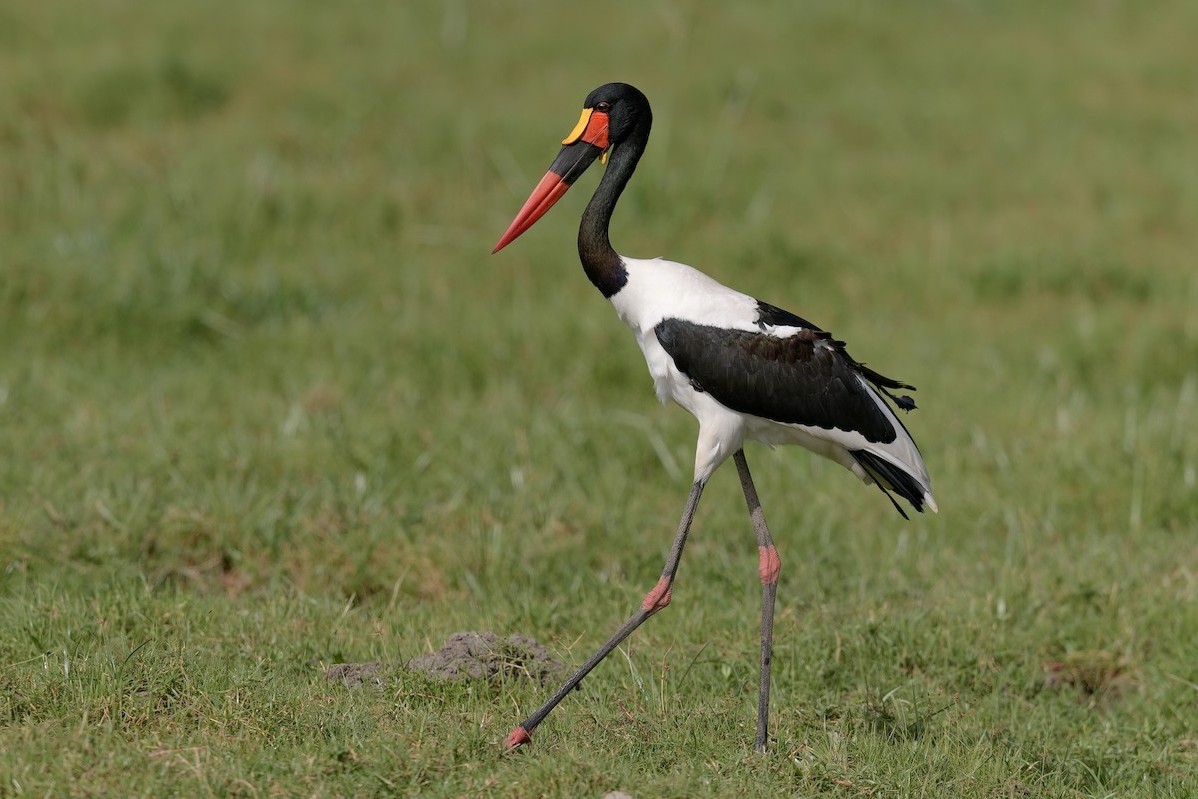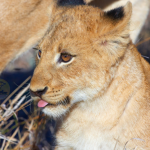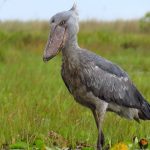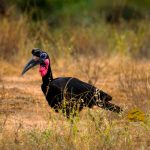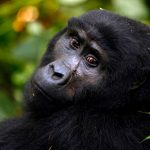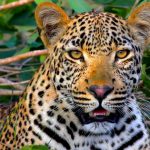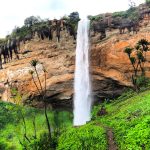The Saddle-billed Stork: Uganda’s Wetland Giant of Majesty.
The Saddle-billed Stork (Ephippiorhynchus senegalensis) is one of Africa’s most dramatic and tallest storks, revered for its dramatic plumage and commanding stature. Found in Uganda’s vast wetland habitats, this beautiful bird is a birdwatcher’s and wildlife enthusiast’s dream come true. With its unmistakably large stature and distinctive bill pattern, the Saddle-billed Stork is a standout as a symbol of the high biodiversity of Uganda’s wetland habitats.
Appearance and Behavior.
Saddle-billed Stork is a stately and distinctive bird, reaching heights of 1.5 meters (5 feet), with a wing span of more than 2.5 meters (8 feet). Its shining black-and-white plumage, long red bill topped with a yellow “saddle” at the base, and black legs of lengthened length with joints of pink coloration. Both the male and female storks resemble each other, but the male has dark-colored eyes while the female has bright yellow irises, thereby being distinguishable.
These storks, although small, are inclined to remain silent, making sounds only on rare occasions, except bill-clattering during courtship. They have a gentle manner of walking, wading in shallow streams to search for food.
Habitat and Distribution in Uganda.
The Saddle-billed Stork is thriving in Uganda’s undisturbed wetlands, floodplains, and riverbanks. Among some of the best places where one can spot them in Uganda are:
Murchison Falls National Park: The Nile River and its associated wetlands offer a perfect habitat for these storks.
Queen Elizabeth National Park: They are found in the extended Kazinga Channel and Ishasha plains.
Lake Mburo National Park: Offers patches of seasonal wetlands where they can be readily spotted feeding.
Semliki Wildlife Reserve: The ideal location for viewing rare bird species of the wetlands including the Saddle-billed Stork.
Ziwa Rhino Sanctuary: Well known for having wetland areas, ideal for viewing storks as well as rhino tracking.

Diet and Feeding Habits of Saddle-billed.
Ephippiorhynchus senegalensis is a resourceful predator and feeds on numerous aquatic animals. It eats principally fish, frogs, crustaceans, and insects but takes small reptiles and even minute birds as prey. Using its strong and needle-like bill, it snatches and swallows the prey almost in one take. In sharp contrast to other storks with the exception of a few others, it doesn’t scavenge and takes up live prey off shallow waters.
Breeding and Nesting Habits.
Saddle-billed Storks are monogamous and build enormous twig nests high up in trees, usually located near water. They use the same breeding grounds year after year and each breeding season gets a reflooring with new material. Females lay 1-3 eggs and both the male and female take turns incubating these for some 30-35 days. Hatched chicks are cared for by both the father and mother and take nearly three months to grow in the nest, then they escape.
Lifespan of the Saddle-billed Stork.
The Saddle-billed Stork has a long lifespan of 25-30 years in the wild and even longer in protected areas. They live long because they have a strong immune system, no natural predators, and can adapt to wetland environments.
Conservation Status of in Uganda.
Ephippiorhynchus senegalensis is classified as Least Concern by the IUCN, though habitat loss is a growing menace. Wetland draining, pollution, and human encroachment reduce their breeding and feeding grounds. Conservation in Uganda, including the protection of national parks and wetland reserves, is necessary to maintain numbers.
Spotting the Saddle-billed Stork in Uganda.
For ornithologists and bird watchers eager to spot Ephippiorhynchus senegalensis in its native habitat, Uganda offers excellent possibilities through guided birding tours. To maximize spotting chances for this lovely bird, travel to wetland-dotted areas of Uganda with a seasoned guide.
One of the best ways of finding Uganda’s bird gems is by visiting Arcadia Safaris’ tour, a top-quality safari company. Birding guides at Arcadia Safaris are experts in leading visitors close to Uganda’s most fascinating birds, some of which include the Saddle-billed Stork.
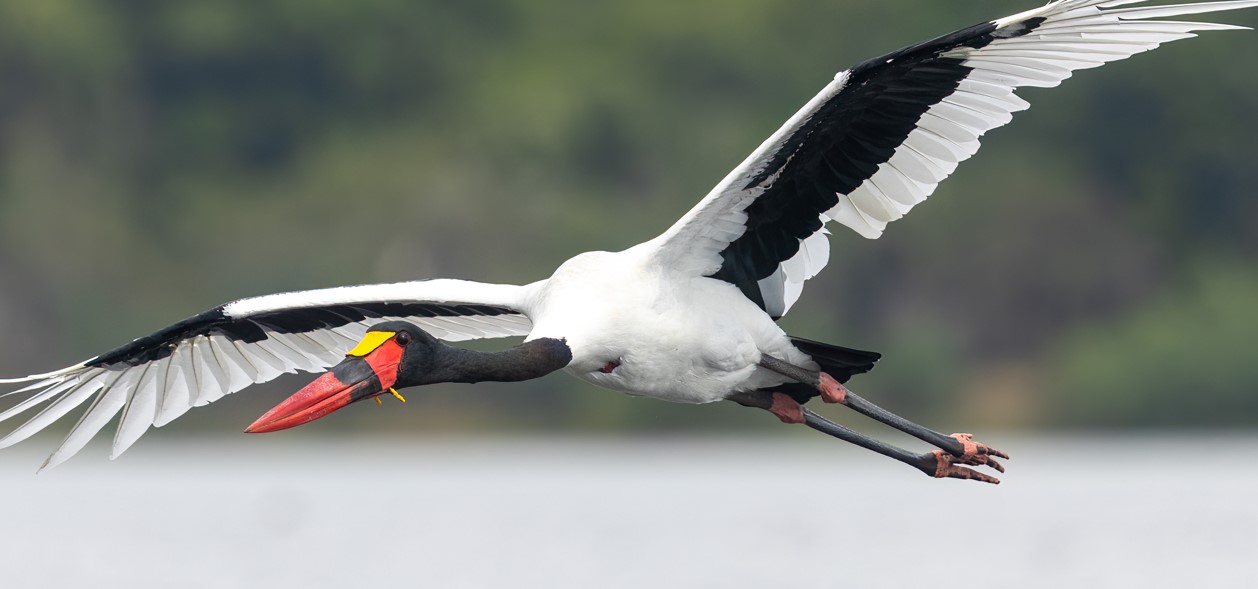
Our Remarkable Uganda Birding Tours.
Take a journey into some of the most memorable landscapes of Uganda with our incomparable birding tours. Come for an experience in this paradise for bird enthusiasts, with over 1,000 species of birds, some of which are rare and therefore endemic treasures. From moist forests to wetlands and open savannahs, our guided tours will ensure a unique and breathtaking experience in the Pearl of Africa. Below are some of our best birding tours we offer in Uganda.
21 Days Birding Uganda and Gorilla Trekking Safari
18 Days Birding Tour with Gorilla Trekking
10 Day Birding Uganda and Game Drives
3 Day Mabamba Shoebill and Birding Safari
Remarks on Saddle-billed Stork in Uganda.
The Saddle-billed Stork is Uganda’s most dramatic wetland bird, astounding birders with its stunning appearance and stately demeanor. As wetlands continue to be threatened by environmental pressures, conservation efforts and sustainable tourism remain instrumental in protecting this stunning bird. For the adventure of a lifetime birdwatching, take a guided safari tour with Arcadia Safaris and witness the incredible beauty of Uganda’s incredible birdlife.


